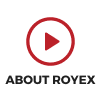
Who Are My Competitors? A Complete Guide to Market Analysis for Mobile Apps
Series note: Based on common questions asked by our customers before developing mobile apps, we have listed most of the questions and answers in detail for each. This article is part of our series “Mobile App Journey: Things You Must Know.”
Introduction: Why Competitor & Market Analysis Matters
Many first-time founders assume that having “no competitors” is a strength. In reality, it’s often a red flag. If no one is tackling a problem, it may mean the market is too small, the pain isn’t urgent, or adoption is unlikely.
Competitor and market analysis is about more than “who else has an app like mine.” It’s about:
- Understanding direct and indirect rivals
- Learning from their strengths and mistakes
- Identifying gaps you can own
- Knowing how big and fast-growing the market really is
- Building a defensible position that investors and users find credible
Apps live in a brutally competitive ecosystem: over 8.9 million apps are available between Google Play and Apple’s App Store. Yet the average user interacts with just 9–10 apps daily and about 30 monthly. That means every install is a battle, and without competitor clarity, you’re flying blind.
Step 1 — Define What Counts as a Competitor
Competitors come in different flavors:
Direct competitors
Apps that offer the same core service.
-
Example: Uber vs. Lyft in ride-hailing.
Indirect competitors
Different apps solving the same job-to-be-done.
-
Example: Duolingo (language learning) vs. YouTube tutorials.
Alternative solutions
The non-digital substitutes people use today.
-
Example: A fitness-tracking app competes against pen-and-paper logs or gym-provided sheets.
Future competitors
Adjacent players who may expand into your space.
-
Example: Instagram expanding into e-commerce, affecting shopping apps.
Takeaway: You don’t just compete against “apps like yours.” You compete against every way your users solve the problem—today and tomorrow.
Step 2 — Start with App Store & Category Research
Apple App Store & Google Play
-
Browse top charts and trending categories in your domain.
-
Use App Store Optimization (ASO) tools like Sensor Tower, App Annie (Data.ai), or App Radar.
-
Study screenshots, ratings, reviews, and update frequency.
Stat insight: Global app revenue in 2022 was $420.7 billion and is projected to reach $673.8 billion by 2027. Growth is uneven across categories: games dominate spend, but finance, health, and education apps are gaining fast.
App Store Reviews = Market Research Gold
-
Look for patterns in complaints (“too many ads,” “hard to navigate”).
-
Look for wish-list features (“I wish it had dark mode”).
-
Look at update cadence: frequent updates = serious, underfunded apps may update rarely.
Step 3 — Use Market Intelligence Tools
Several tools can give you an edge:
-
Data.ai (App Annie): Downloads, revenue estimates, DAU/MAU.
-
Sensor Tower: Advertising intelligence, keyword rankings.
-
SimilarWeb: Traffic sources, engagement metrics.
-
Crunchbase: Competitor funding rounds, investor signals.
-
CB Insights: Market maps, category shifts.
Stat insight: In 2024, the average cost per install (CPI) ranged $1.75–$4.50 globally, but in certain verticals like gaming or finance, CPIs were much higher—demonstrating the intensity of competition.
Step 4 — Analyze Competitors on Multiple Dimensions
1. Features & UX
-
What features are must-haves?
-
What features are differentiators?
-
Where do users complain about friction?
2. Business Model
-
Free vs. freemium vs. subscription.
-
How do they monetize (ads, IAP, subscriptions, partnerships)?
-
Any creative pricing angles (bundles, trials)?
3. Audience & Positioning
-
Who are they targeting? (Demographic, psychographic, geography)
-
What’s their messaging in ads?
4. Traction & Performance
-
Ratings, reviews volume.
-
Downloads & revenue estimates (via Data.ai, Sensor Tower).
5. Marketing & Distribution
-
Channels they use (TikTok, influencers, paid search).
-
Partnerships (fitness app + gym chain).
Step 5 — Identify Gaps & Opportunities
Competitor analysis is worthless unless it yields white space—the problems unaddressed or underserved.
Examples of gaps you can exploit:
-
Underserved segment: Competitors only target premium users; you build for emerging markets.
-
Experience gap: Apps are clunky; you win on elegant UX.
-
Trust gap: Competitors mishandle data; you emphasize privacy.
-
Feature gap: Competitors don’t integrate with popular tools; you plug the gap.
Stat insight: A Standish Group study found 64% of features in typical software products are rarely or never used. That means listening to real needs (not competitor bloat) can itself be a competitive edge.
Step 6 — Validate with Users
Your hypotheses about competitors vs. gaps should be tested with real humans:
-
Surveys: “Which apps do you use for [job]?” “What do you like/dislike?”
-
Interviews: Walk through how they solve the problem today.
-
Shadowing/diary studies: Observe workflows.
If users aren’t switching to your competitor, ask why. The reasons often reveal unmet needs you can solve.
Step 7 — Monitor Continuously
Competitor landscapes evolve fast. Today’s adjacent player may become tomorrow’s head-to-head rival.
-
Set Google Alerts on top competitors.
-
Follow their App Store update logs.
-
Track ad spend and creatives monthly.
-
Monitor funding news (new $20M round = they’re scaling aggressively).
Stat insight: In 2023, global app install ads spending topped $80 billion, showing how aggressively competitors fight for installs.
Pros & Cons of Competitor Analysis
Pros:
-
De-risks blind spots.
-
Inspires better UX & business models.
-
Helps investors see you’ve done homework.
Cons:
-
Can lead to copycat thinking.
-
May paralyze you if you over-focus on “giants.”
-
Data may be incomplete or estimates.
Best practice: Learn, but don’t mimic. Differentiate.
Case Studies: How Top Apps Used Competitor Insights
Zoom
-
Competitors: WebEx, Skype.
-
Gap spotted: ease of use + reliability.
-
Result: Became default video app in pandemic.
Spotify
-
Competitors: iTunes, Pandora.
-
Gap spotted: music as streaming, not ownership.
-
Result: Dominates global streaming.
Revolut
-
Competitors: banks, PayPal.
-
Gap spotted: global travelers wanted low FX fees + instant transfers.
-
Result: 35+ million customers by 2024.
Statistics Snapshot
-
8.9M apps globally in app stores, but only 30 used monthly per user.
-
Global app revenue projected $673.8B by 2027.
-
CPI averages $1.75–$4.50 globally, higher in verticals like gaming/finance.
-
64% of features rarely used (Standish Group), meaning user-centricity is key.
-
App install ads spend $80B+ worldwide (2023).
Why Royex Is the Best Company for Mobile App Development
At Royex Technologies, we don’t just write code—we help clients win markets.
-
Deep Discovery: Our workshops help identify not just what to build but who you’re up against and what gap you can own.
-
Competitor Benchmarking: We leverage ASO tools, market reports, and app reviews to map rivals and opportunities.
-
User-Centered Design: We prioritize solving the real problems competitors ignore, not bloating apps with unused features.
-
Proven Track Record: With 500+ projects delivered since 2013 across industries like e-commerce, fintech, transport, and health, we know how to turn competitor analysis into competitive advantage.
-
Global + Regional Insight: Operating from Dubai with a global reach, we combine worldwide benchmarks with MENA-specific market understanding.
Result: Apps built with Royex don’t just launch. They differentiate.
Conclusion
Competitor and market analysis is not optional—it’s foundational. The app stores are crowded, user attention is scarce, and money flows only to apps that solve real jobs better than alternatives.
By mapping direct and indirect competitors, mining reviews, studying market trends, and validating gaps with real users, you can position your app to thrive—not just survive.
And with a partner like Royex Technologies, you gain not just developers but strategists—people who ensure you’re not another statistic in the 42% of startups that fail for “no market need.”
We are a leading mobile app development company in Dubai, that provides innovative solutions for small, medium, and large-scale companies. We specialize in responsive web development, mobile app development, CRM integration, AI solutions for website & mobile applications, and many more. Our extensive experience in mobile app development will help you to take your business to a high level.
Check our portfolio to see our previous works. Contact us via email at info@royex.net or call us at +971566027916. To get started with us.
Sources
- Statista – Mobile app revenue forecast (2022–2027)
- Business of Apps – How many apps are in the app stores? (2024)
- Adjust – Mobile app retention benchmarks (2024)
- Business of Apps – Cost per Install research (2025)
- Standish Group – 64% of software features unused
- Insider Intelligence – Mobile app install ads spend $80B (2023)





